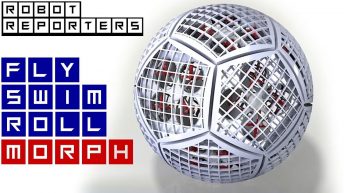The cell-sized robots are little squares of silicon with legs made from platinum and titanium, able to swim around inside your body and track vital signs. The bots are equipped with miniature solar cells, powered with laser light.
Remember the old sci-fi movie “Fantastic Voyage” in which a tiny vessel makes an emergency journey inside the brain of an injured scientist? The real-life bots, which Marc Miskin developed, are about the same size.

“We found out you can inject them using a syringe and they survive,” Miskin says. “They’re still intact and functional, which is pretty cool.”
The cell-sized robots are small, but strong
Each one of a robot’s four legs is just under 100-atoms-thick, but powered by laser light hitting the robots’ solar panels, they propel the tiny robots. “The legs are super strong,” said Miskin. “Each robot carries a body that’s 1,000 times thicker and weighs roughly 8,000 times more than each leg.”
For now, the micro robots swim around on microscope slides in Marc Miskin’s lab, but researchers are working on smarter versions, with on-board sensors, clocks and controllers.
The future is bright for micro-robots
In particular, they are looking for new energy sources, such as ultrasound and magnetic fields, that would give the robots greater range and ultimately allow them to work in the human body, delivering drugs or mapping the brain.
A million functional robots can be produced from a 4-inch silicon wafer in new nano-fabrication process.
Marc Miskin, assistant professor at the University of Pennsylvania, developed the techniques whilst a post-doc at Cornell University, working with colleagues Itai Cohen, Paul McEuen, and Alejandro Cortese. Miskin presented his research this week in Boston at a conference of the American Physical Society.




